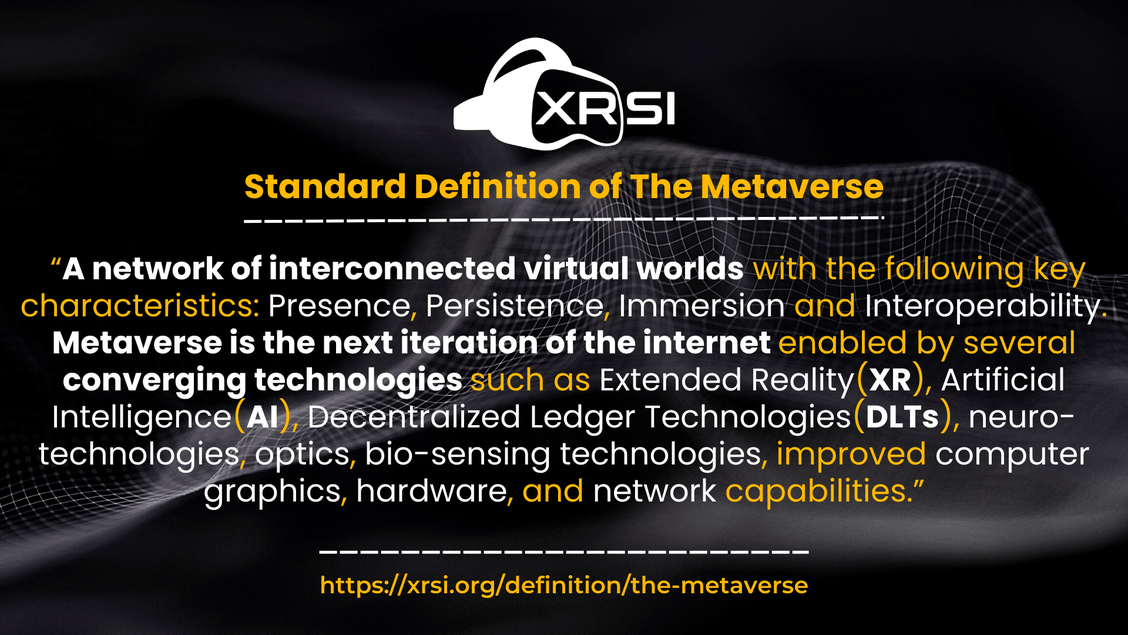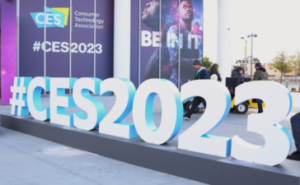You might have heard about the metaverse a little less frequently recently. And, people in the space are at odds as to why that is. Maybe it became clear that it isn’t necessarily right around the corner. Maybe people are distracted by other emerging technologies in the spotlight right now. Or, maybe people said it too many times and now it sounds funny.
Whatever the reason the press has been less interested, it’s still a word that a lot of specialists are still using – and disagreeing on. The XR Safety Initiative recently published a standard definition that might help get us all on the same page.
The Metaverse According to XRSI
XRSI officially defines the metaverse as follows:
“A network of interconnected virtual worlds with the following key characteristics: Presence, Persistence, Immersion, and Interoperability. Metaverse is the next iteration of the internet enabled by several converging technologies such as Extended Reality (XR), Artificial Intelligence (AI), Decentralized Ledger Technologies (DLTs), neurotechnologies, optics, biosensing technologies, improved computer graphics, hardware, and network capabilities.”
A full release from XRSI expands on some of those terms, including the identified key characteristics. Which is handy, because presence and immersion are arguably subjective. Further, persistence and interoperability are objective but might require qualification. For example, how many virtual worlds have to interconnect before they are “interoperable”?
Insisting on convergence is also significant in that not all blockchain experiences and not all XR experiences are inherently metaverse experiences. There is still room to explore things like spatial platforms visited in 2D. While ARPost tends to avoid these platforms to dedicate coverage to immersive technology, we haven’t insisted that they be excluded from the dialogue.
Similarly, some experiences feature presence, persistence, and immersion, but not platform interoperability. Some use the term “protometaverse” to refer to experiences that check most of these boxes (or even that do a really good job with two or three of the boxes) but don’t fit the entire bill.

These aren’t criticisms of the definition, they’re things to take into account when we apply the definition to an experience. After all, definitions like this become important because some of these terms – even the terms used in the definition – have emerging or contested meanings. Consider “XR” as “extended reality” – which is not how all people use that abbreviation.
Clear as Crystal
There are a lot of other factors to consider when looking at standard definitions. The biggest one is that, like standards generally, they become more useful the more organizations use them. This standard definition is a recent development and it remains unclear how many other organizations will adopt it.
It is already useful, however. If nothing else, it helps us understand what XRSI means when they say “metaverse” in their internal documents. When people talk about it in higher-level conversations, they’ll often cite the document or individual that they’re following and now XRSI can be on that list.



